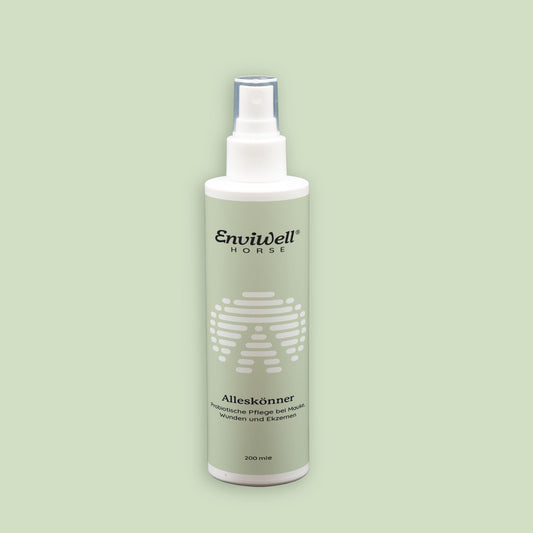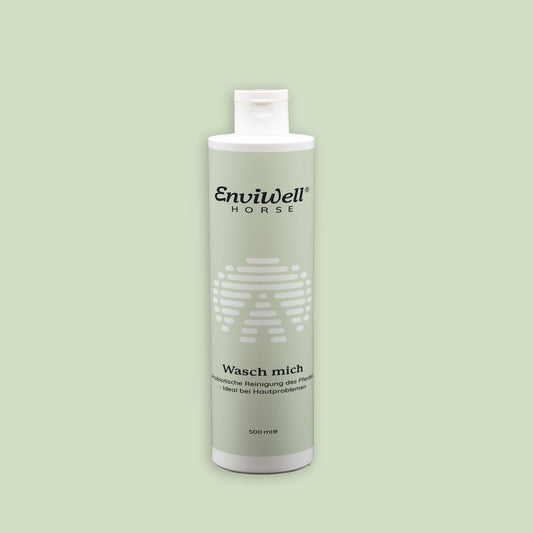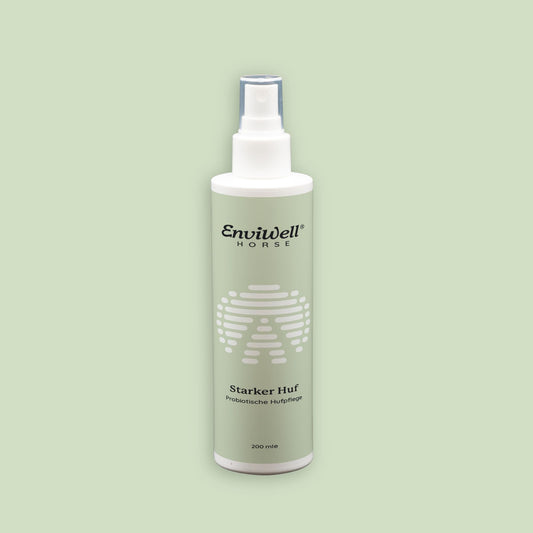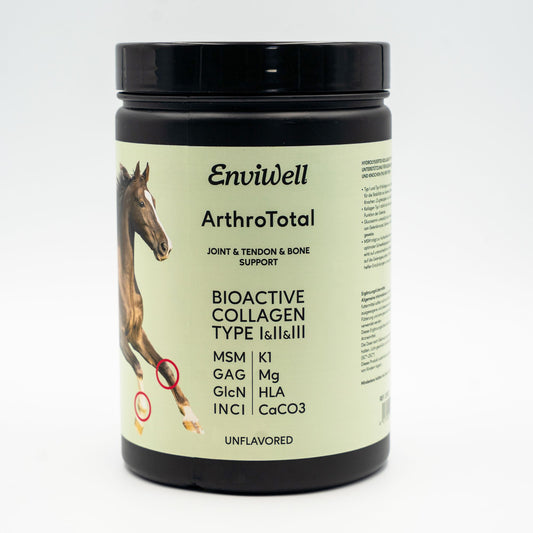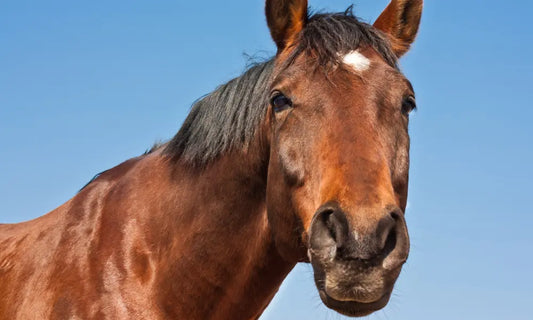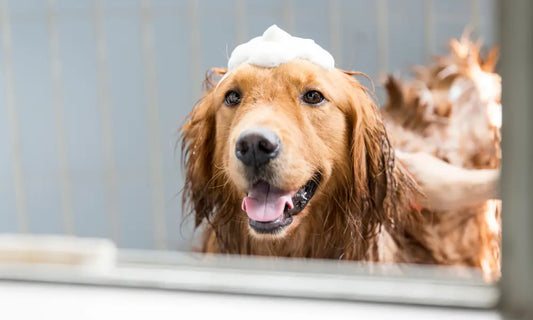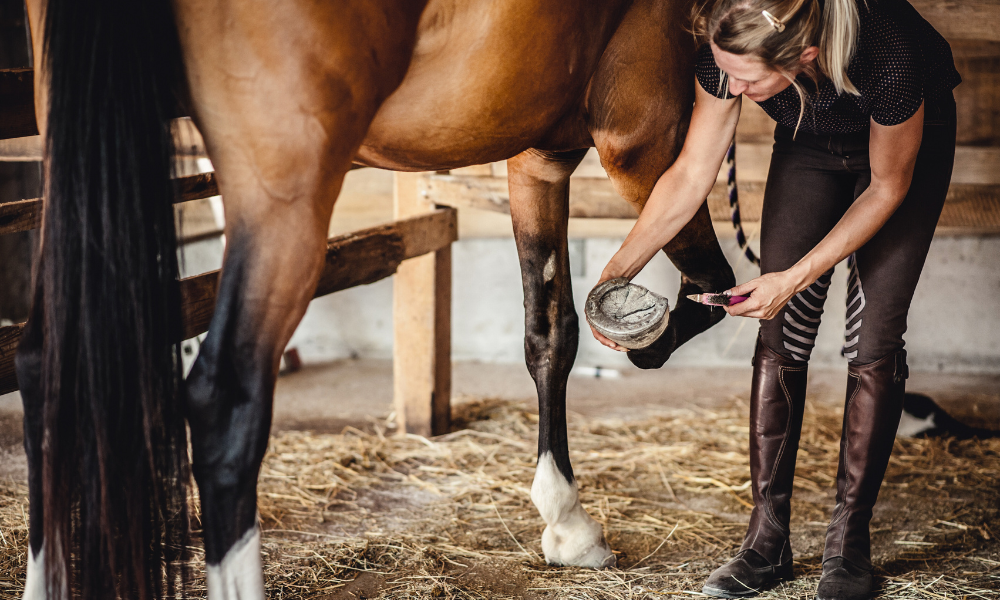
Caring for horse hooves
Alexander DurbanHealthy hooves are the foundation for a powerful and vital horse. They bear the entire body weight and influence not only mobility but also the animal's overall well-being. Inadequate hoof care can have serious consequences – from pain and lameness to chronic diseases. In this article, you'll learn how to properly care for your horse's hooves, what typical problems can occur, and how to avoid them.
Why is hoof care important for horses?
A healthy hoof is the foundation for a vital and productive horse. Proper care helps prevent injuries, diseases, and long-term damage. Neglected hooves can not only lead to lameness but also impair the horse's overall well-being. To understand the importance of hoof care, it is helpful to take a look at the anatomy and function of the hoof.
Anatomy of the horse's hoof briefly explained
The horse's hoof is a complex structure consisting of various structures such as the hoof horn, frog, sole, and hoof wall . These elements work together to cushion the horse's body weight and enable locomotion. The hoof mechanism, i.e., the hoof's ability to deform upon impact and subsequently return to its original shape, plays a central role in blood circulation and thus in the horse's overall health.
Function of the horse's hoof for movement and health
The hoof performs an important shock-absorbing function , providing stability and even distribution of body weight. Without healthy hooves, a horse cannot move painlessly, which can lead to muscle tension and joint problems in the long term. Furthermore, good hoof care supports natural wear and prevents excessive or uneven growth, which could lead to misalignment.
Consequences of inadequate hoof care Without regular hoof care, serious problems can arise:
- Laminitis : An inflammation of the hoof capsule that causes severe pain and lameness. If left untreated, it can lead to shoeing.
- Thrush : A bacterial infection that destroys the frog and can lead to foul odor and lameness.
- Cracks and splits in the horn : These are caused by dryness or mechanical stress and can lead to infections or unstable hooves.
- Hoof ulcers : These painful collections of pus under the sole or hoof wall can lead to sudden lameness and require immediate treatment.

Daily hoof care – every horse owner should do this
Consistent hoof care is important for a horse's health and performance. Regular hoof care can prevent many hoof diseases and improve the animal's quality of life.
Regularly scraping hooves: Technique & tools
Daily hoof cleaning is part of every horse's basic care. This removes dirt, small stones, and grime that can cause pressure sores or infections.
- Technique : Using a sturdy hoof pick, start at the heel and carefully work forward toward the toe. Pay particular attention to the frog, as moisture and dirt quickly accumulate there.
- Tools : In addition to the hoof pick, we recommend a brush for thorough cleaning and, if necessary, a disinfectant for particularly dirty areas.
Check for cracks, thrush or other abnormalities
During daily scraping, the hoof should be checked for any abnormalities.
- Cracks and crevices : Can be caused by dry or too soft hooves and should be detected early to avoid worsening.
- Thrush : A bacterial infection characterized by a foul odor and dark, soft patches in the frog. If detected early, thrush can be treated with special care products.
- Changes in hoof structure : If unevenness or unusual growths are noticed, a farrier or veterinarian should be consulted.
"My pony often had a wet frog with mild thrush, but since I started applying the spray daily, everything's been fine again."
– Milena, product tester
To the product testImportance of clean, dry bedding
A clean stable contributes significantly to hoof health. Wet or dirty bedding can soften hooves and increase the risk of infections such as thrush.
- Daily mucking out : Remove wet manure and wet bedding to ensure a dry environment.
- Suitable bedding : Materials such as straw, wood shavings or special hoof mats can help regulate moisture and keep the hooves healthy.
Daily hoof care only takes a few minutes, but has a significant long-term impact on the horse's health and well-being. Strong Hoof is a proven treatment to support this process. This product provides microbial support for optimal hoof care and strengthens the hoof's natural resilience. It can be applied painlessly and can also be used preventively to prevent infections.
Common hoof diseases and their prevention
Regular hoof care is crucial to preventing conditions that are not only painful but can also cause long-term health problems. Below are the most common hoof diseases , including their causes, symptoms, and preventative measures.
Thrush: Causes, symptoms and treatment
Thrush is a bacterial infection that is favored by damp, unsanitary conditions. It causes an unpleasant odor and black, muddy patches on the frog. If left untreated, the infection can penetrate deep into the hoof structure and cause lameness.
- Prevention: A dry, clean stable environment and regular hooves cleaning significantly minimize the risk.
- Treatment: Affected areas should be cleaned daily and treated with special antibacterial preparations. In advanced cases, veterinary treatment is necessary.
Strong Hoof - Hoof care for horses for the treatment of thrush
- Strengthens the natural resistance of the hoof
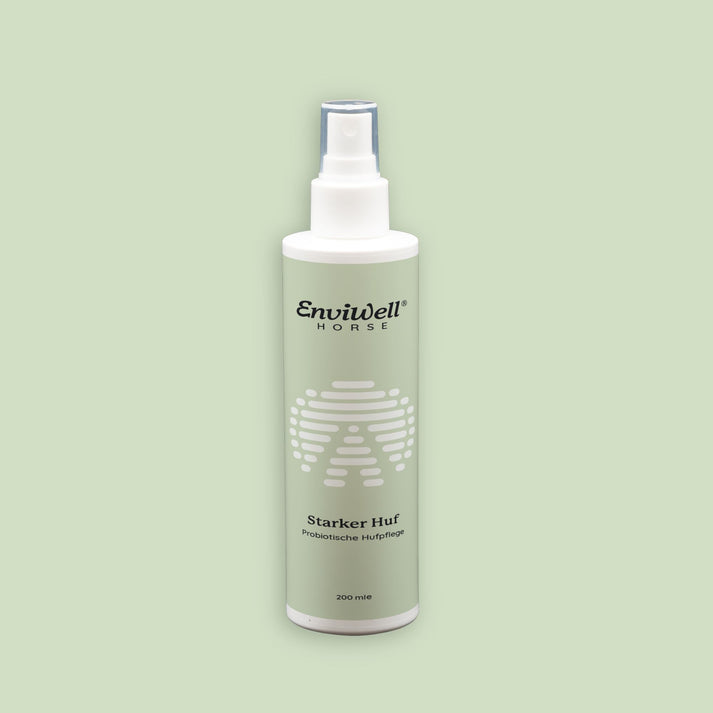
Laminitis: Risk factors and prevention
Laminitis is an inflammation of the hoof capsule that can cause severe pain and, in severe cases, permanent hoof damage. It is often triggered by improper feeding, overweight, or overexertion of the horse.
- Prevention: Controlled feeding with reduced sugar and starch content, regular exercise and weight control are crucial to minimize the risk of laminitis.
- Treatment: If laminitis is suspected, a veterinarian should be consulted immediately. Treatment includes pain management, hoof cooling, and appropriate feeding and housing.
Hoof ulcers: Recognize and react correctly
Hoof ulcers are caused by pressure sores, injuries or trapped foreign bodies and often lead to sudden lameness.
- Prevention: Regular hoof care and the removal of foreign bodies from the frog and sole reduce the risk.
- Treatment: A farrier or veterinarian will open the ulcer to drain the pus. The hoof will then be disinfected and covered with a protective bandage.
Horny cracks and fissures: How to prevent and treat
Cracks in the hoof horn can occur due to dry soils, lack of care, or irregular hoof trimming . If left untreated, they can deepen and lead to infection.
- Prevention: A balanced diet with biotin and essential minerals supports hoof growth. Regular hoof trimming prevents excessive stress and cracking.
- Treatment: Superficial cracks can be treated with hoof oils and greases. Deeper cracks should be examined by a farrier and stabilized if necessary.
Through consistent hoof care and appropriate husbandry, many of these diseases can be avoided, so that the horse remains healthy and productive in the long term.
"The sprays are pleasantly quiet, so my horse doesn't show any shyness. After just two weeks, I saw visible results. I also use it preventatively on healthy hooves and am thrilled: The foul odor disappears quickly, and the hooves are noticeably stronger and less wet."
– Alexandra, product tester
To the product testStrong hoof - The ideal support for hoof care
Proper hoof care plays a crucial role in a horse's health and resilience. A supplemental care product like Strong Hoof can provide valuable support. This product's microbial formula strengthens the hoof's natural resistance and helps prevent diseases such as thrush.
Thanks to its painless application, Strong Hoof is ideal for regular care . It supports the maintenance of healthy hooves and can also be used in conjunction with the treatment of thrush. Consistent use can make hooves more resistant to external influences.
In addition to the use of such care products, comprehensive hoof care with regular check-ups and veterinary supervision remains essential to avoid long-term problems.
Through consistent hoof care and appropriate husbandry, many of these diseases can be avoided, so that your horse remains healthy and productive in the long term .

